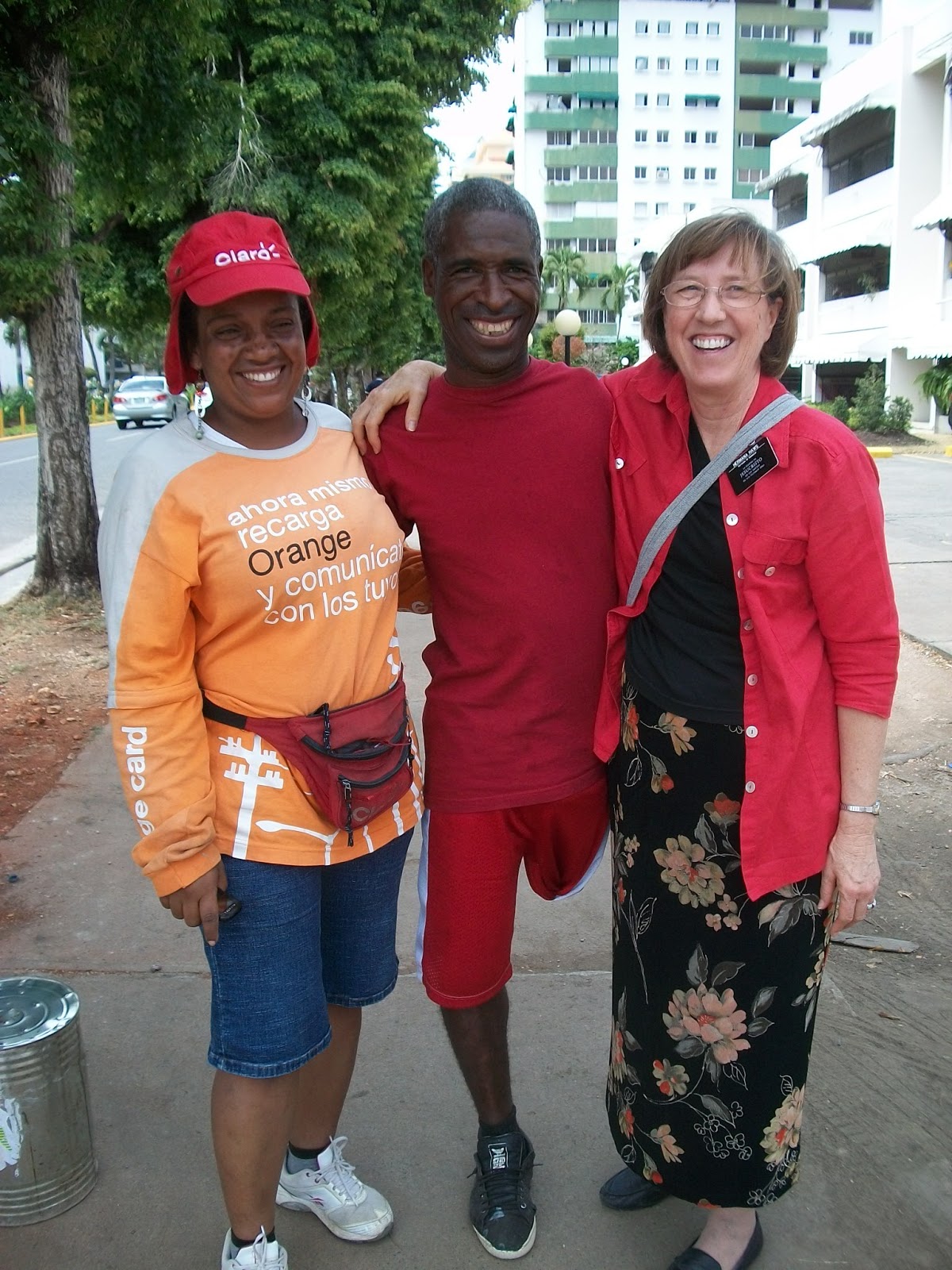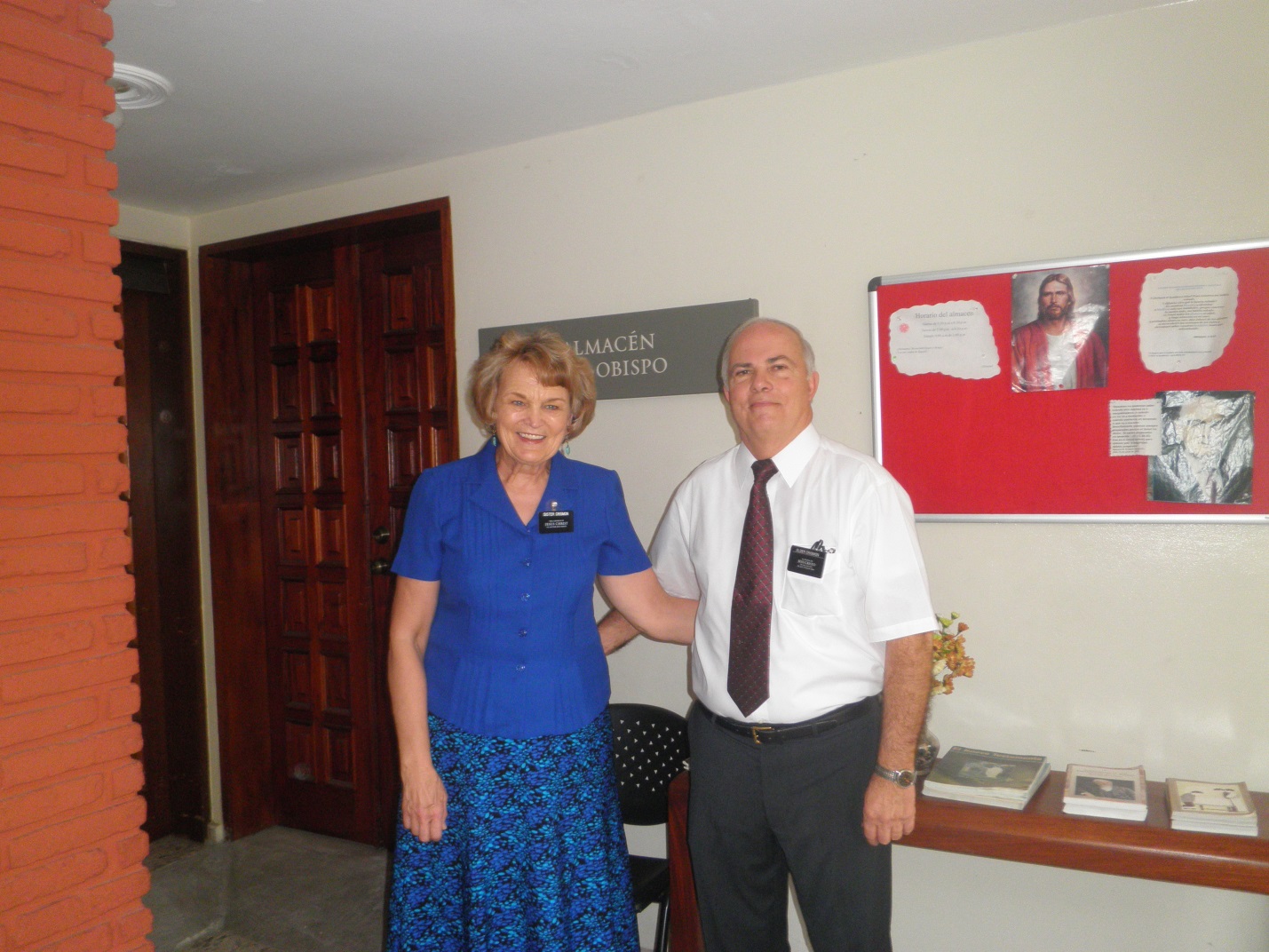ONE ARM, ONE LEG RAMON MERISTI
One tragic
day, thirty two years ago, 13 year old Ramon Meristi accompanied his father on
horseback as they approached a railroad track.
A train loaded with sugar cane approached. The events that followed are not clear, perhaps
because the boy’s memory blocks them and perhaps because he failed to
communicate completely to this missionary.
Perhaps it was a frightened horse.
Regardless of what caused it, Ramon’s loving father made the terrifying
decision, without concern for his own welfare, to sacrifice his own life under
the train in an effort to push his son out of the way out of the jaws of death. He did save Ramon’s life, but the train unsympathetically
sliced off the boy’s left arm at the shoulder and left leg at the hip leaving
him scarcely even a stump of either limb.

Surely words
cannot express the pain and anguish Ramon suffered during the months that
followed. His mother, heartbroken
because of the death of her husband and a hopeless witness of Ramon’s suffering
wasted away until she left this world. Ramon
and two other young siblings remained to struggle on alone. Ramon’s sister is living in La Romana. His brother drowned in a fishing accident.
For 32 years
Ramon has been basically alone in the world without means or resources. Is he bitter?
Does he curse God?
We think not!
It is true
his source of income is begging on a street called Sarasota in the city of
Santo Domingo. It is true he hops
wherever he goes. It is true he suffers
and continues to face many trials such as hunger, sickness, setbacks and every
other natural human emotion. But to the
condemnation of the rest of many of us, he is happy with life and constantly
wears a huge smile to prove it!

Fortunately
he does not stand on one foot completely alone.
He has a wide circle of friends.
We even felt drawn to him. One of
his best friends is Adela who sells her wares of telephone cards on the same
corner as Ramon and provides him a place to safely lay his head at night in her
own humble home. Between his “work”
corner and the place he calls home, many people share with him the little bit
they have and a few people driving in the streets within the safety of their
protected environment of metal and glass offer him bits and pieces of alms. Sometimes he goes to places there are lots of
people window shopping. He throws his
hat on the ground to receive offerings and dances the bachata and marangue on
his one blessed leg to entertain. Every
day and all day, he hops through life with a huge smile on his face. Can we not have the same happy countenance
ourselves?

We came
prepared to find a way to purchase him a prosthetic leg or arm using
humanitarian funds of the church. We
figured we knew what was best for him.
To our surprise, he kindly said “No”.
He has walked on one leg for 32 years.
The good Lord blessed him with exceptional balance and strength in his
good right leg. To him, hopping on one
foot is “normal”. He could not walk on a
prosthetic limb any more than you or I could walk on stilts all day. He feels he would be uncomfortable and throw a
prosthetic limb aside in preference to what the good Lord has granted him. He believes (and is probably correct) that
here isn’t enough stump to attach limbs anyway.
We asked him
how we could help him. His answer was
that if we could help him find a little humble place of his own, small and
humble though it might be, just something he can call his own and be safe at
night from the winds, rain and storm that would be his dream come true.
Can we help
him? He already has helped us!
HOW FAST CAN YOU CHANGE YOUR
WINDSHEILD WIPERS?
There are
chiriperos (street vendors) of all kinds at every major intersection trying to
sale their wares. Windshield vendors are
a common site. Wallace always took an
hour to change the wipers when he did it back home. This fellow was particularly pushy when he
saw Wallace was taking pictures of chiriperos.
In the time it takes you to say “No!” “Don’t touch my windshield
wipers!”---in that amount of time he had removed our existing wipers and put on
different ones. Wallace told him to take
it off. Our truck is brand new and
hardly needs wipers. In the blink of an
eye he had change it again---at least we hope he put the same one back. He was really really fast. He would have completed both sides in less
than a minute. We wonder how many he
changes in a day? He was a friendly guy.
BLOCK WATCH CHAIRMAN?
This is Jose
Carbonal. He is our neighbor. He sits right here ALL day long and rarely
moves. He is kind of looney, but a nice
dude. We made the mistake of giving him
some reading glasses we had laying around so now he is asking for all kinds of
things---which we haven’t given. Wallace
says he is going to put him to work cleaning up the street. If he does not, we will give him
something. At least he is watching
everything that happens---We wonder if that makes us feel better?
DRUG/GANG HOUSE
This is a
home built in the 60s. Trujillo owned it
at one time. Later it was a clinic, then
a home for children and finally vacant and taken over by gangs who stripped the
home and made it into a den of thieves.
Finally it was rescued by a neighborhood group who got rid of the drugs
and gang and are turning it into a school to rescue youth who are getting into
trouble. It isn’t our perfect project,
but the stake president is enthusiastic about it and would like to help
them. We will see.
HEALTH CLINIC
We witnessed
the most amazing thing today. We drove
into a stake center parking lot and found the building filled with people. The stake, under the leadership of the Stake
Relief Society president had organized a health clinic. Everyone in the neighborhood was invited to
receive free health exams and medicine and vaccinations. Doctors and nurses came to volunteer their
time and resources and hospitals donated medicine. It was an incredible sight to see. We have never seen a better member organized
service project and what is better they did it all by themselves! It made us feel wonderful.


































